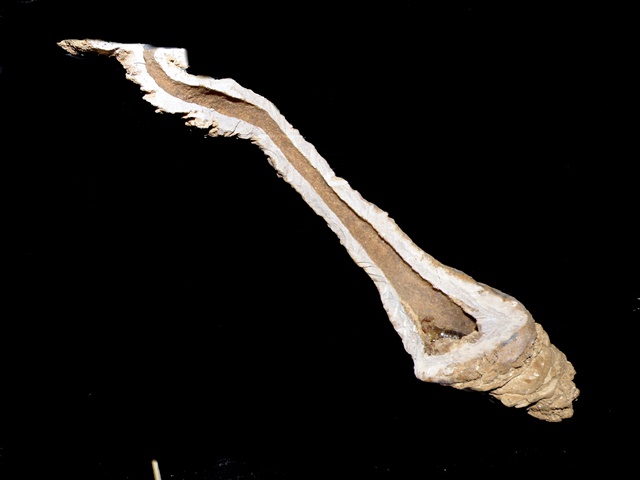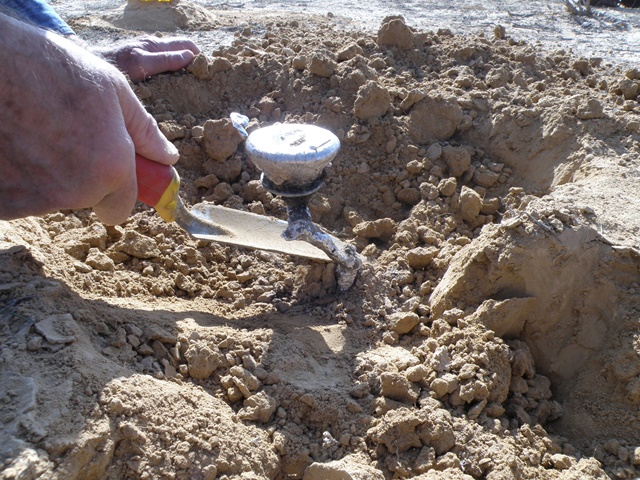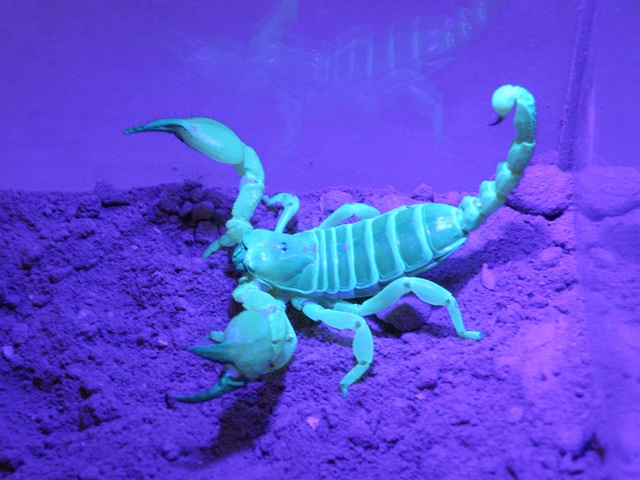Ben-Gurion University of the Negev scientists have discovered that scorpion burrows have a platform on which to warm up before the evening hunt.

An epoxy resin cast of a scorpion burrow. You can see the scorpion at the bottom | Photos: Berry Pinshow, Stuart Summerfield and Amanda Adams
Dr. Amanda Adams, a post-doc in the Marco and Louise Mitrani Department of Desert Ecology at the Jacob Blaustein Institutes for Desert Research and Prof. Berry Pinshow, her adviser, are investigating the burrows of wild Large-Clawed Scorpions (Scorpio maurus palmatus) in Israel's Negev Desert. After trapping the scorpions, they prepared replica casts of their burrows by filling them with molten aluminium. Once the casts had solidified, they were then dug out to be analysed by a 3-D laser scanner and computer software.
Rather than being simple holes in the ground, it was found that the burrows followed a very sophisticated design. Each burrow began with a short, vertical entrance shaft that flattened out a few centimeters below the surface into a horizontal platform. The researchers believe that this provides a safe, warm place for the scorpions to increase their body temperature before they leave the burrow to forage at night. As ectothermic animals, scorpions rely on energy from the environment to regulate
their internal temperature.
 Prof. Berry Pinshow taking a cast of the scorpion burrow with molten aluminum | Photos: Berry Pinshow, Stuart Summerfield and Amanda Adams
Prof. Berry Pinshow taking a cast of the scorpion burrow with molten aluminum | Photos: Berry Pinshow, Stuart Summerfield and Amanda Adams
The burrows then turn sharply downwards, descending further below ground to form a dead-ended chamber. Being cool and humid, this chamber provides a refuge for the scorpions to rest during the heat of the day, where evaporative water loss is minimal. As the design was common to all the burrows studied, this suggests that burrow building in scorpions has evolved by natural selection to meet the animals’ physiological needs.
“Very little is known about burrow environments,” says Dr. Adams. “We plan to expand our studies to more scorpion species around the world to test how burrow structure is shaped to be part of the burrow builder’s extended physiology.” Understanding the relationship between environmental conditions and burrow structures, meanwhile, could help to predict how burrow-builders will respond to climate
change.
Scorpions are predatory arachnids, found on all continents except Antarctica. They occupy a range of habitats, including forests, grasslands, mountains and deserts. Their varied diets include arthropods, lizards and even small rodents.
Dr. Adams will be presenting the study at the Annual Meeting of the Society for Experimental Biology in Manchester, UK on Thursday July 3rd.

A Large-Clawed Scorpion (Scorpio maurus palmatus) | Photos: Berry Pinshow, Stuart Summerfield and Amanda Adams
